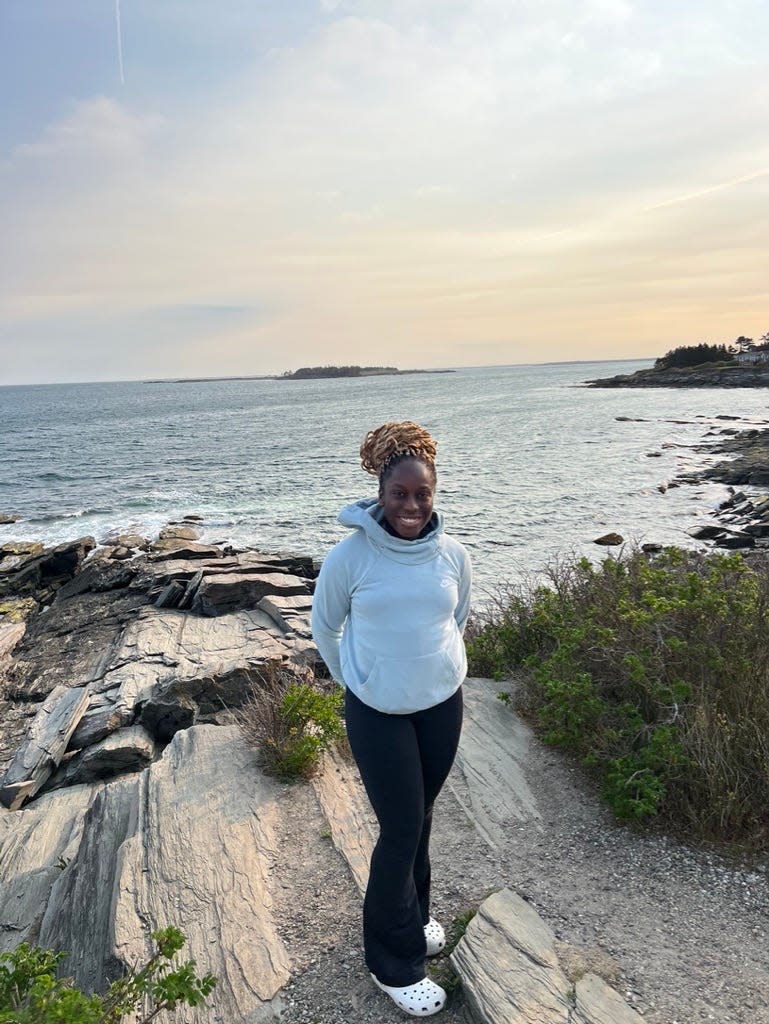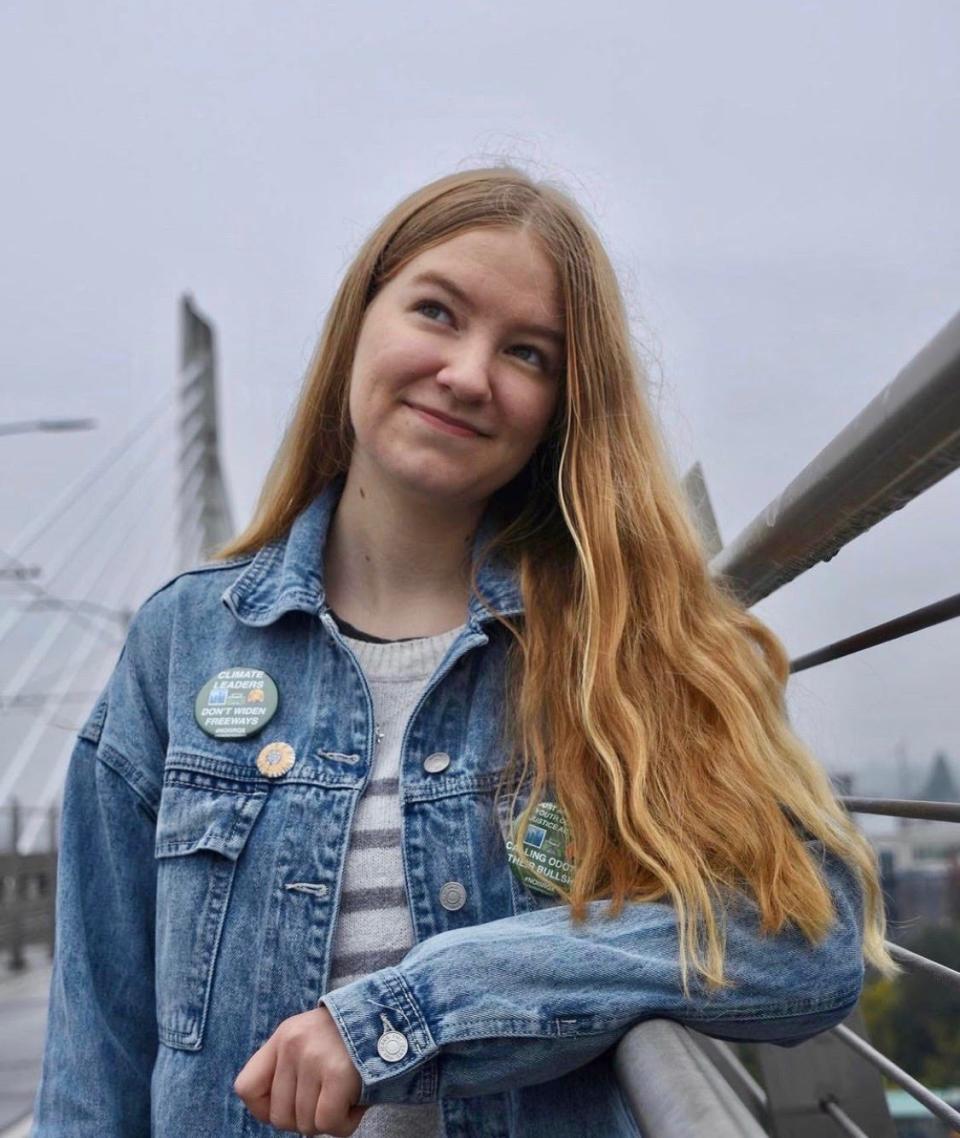How to teach about climate change? Education in many US schools is lacking, students claim
Today’s children and young adults care more about climate change than they do most issues as temperatures have reached record highs and the number of weather-related disasters continues to rise.
Yet research suggests the learning materials students are consuming in school have in some cases muted their coverage of climate change. Students told USA TODAY treatment of the issue has remained limited in schools even as their demands for such education have grown.
“Everything I learned about climate change was self-taught,” said Amara Ifeji, 21, now a senior at Northeastern University in Boston and an environmental justice advocate. Her low-income high school in Maine didn’t require climate change instruction for students in her particular science, technology, engineering and math program, let alone instruction that addressed the uneven impacts on people of color.

While a number of states have changed their standards and curricula to address climate change, she worries about all the students at schools that lack the resources or the political will to make it a formal and interdisciplinary part of the learning experience. Polls have found a majority of teachers still don’t talk about the topic in class, usually saying it's outside their wheelhouse.
This, observers say, amounts to a missed academic opportunity. At a time when schools are struggling to recover from pandemic-era losses, why not incorporate into lessons an issue that students care about deeply?
Climate change, advocates argue, is also an existential threat to the life quality and livelihoods of students today. A 2021 study of thousands of young people in nearly a dozen countries found that the majority feel sadness, anxiety, anger and guilt about climate change. Research shows a correlation between climate change education and a future reduction in carbon emissions.
Gen Zers turn up the heat on Biden They want climate action, not words
Textbooks, children’s media tiptoe around climate change
Young people’s emotions around climate change stem from how much their futures will be affected by it – and the sense that older adults have done relatively little to brighten their prospects.
“Whether it’s decisions about jobs or where they live, their circumstances will be shaped by climate change,” said Laura Schifter, a senior fellow at the Aspen Institute who oversees the think tank’s This is Planet Ed initiative. The initiative seeks to help all levels of education, from early learning settings to college classrooms, navigate and address the climate crisis, through everything from awareness-raising to infrastructure decisions.
“Right now,” Schifter continued, climate change “is insufficiently taught in American schools.”
One key reason, experts say, is a lack of resources. A study published late last year found that although the growing body of evidence that humans have contributed to and will reap the consequences of a warming planet, college-level textbooks have actually backtracked a little in their discussion of the topic.
While biology textbooks’ coverage of climate change has increased overall since the 1970s, the study found, it dropped off a little in the 2010s. In the 2000s, the textbooks included a median of 52 sentences on climate change, according to research by North Carolina State scholars. In the 2010s, the median dipped to 45 sentences – less than three pages.
Meanwhile, the media kids consume outside of school isn’t doing much better. Another report published around the same time analyzed hundreds of hours of popular children’s TV shows and family movies, finding just a few references to the topic. This is despite the vast majority of parents saying they’re eager for their kids’ media to tackle the subject.
This exclusion from media and learning materials is compounded by significant variations in learning standards and requirements. Efforts in Congress to support climate change education have been unsuccessful.
A risky topic to teach
Classrooms globally are struggling to adequately cover this topic, as UNESCO research has shown. But in the U.S., book and curricular restrictions – or the mere threat of such bans – have made teaching about climate change feel particularly precarious in some regions.
Despite the vast majority of parents and members of the public supporting climate change education, the scrutiny has had a chilling effect on some teachers’ and schools’ willingness to address it.
It’s become “a kind of curricular hot potato,” said Bill Bigelow, a former social studies teacher and co-director at the Zinn Education Project who has helped edit and write climate education lessons. Adequate climate education, he said, necessitates coverage in not just science classes but subjects ranging from history to language arts.
Yet this interdisciplinary relevance makes it especially dicey. “The standards that states and school districts and teachers adhere to lag behind the consciousness of the crisis,” he said.
In Ohio, one bill sought to deem climate change a controversial topic, requiring discussion of “both sides” in their education settings. In Oklahoma, where the economy relies heavily on oil and gas, a lawmaker introduced legislation earlier this year that would have enabled students to question “existing scientific theories” – and resist “modern wokeness” – on climate change.
The Sooner State’s Republican Party platform, updated in 2020, reads: “We oppose the teaching of the theory of anthropogenic global warming without providing equal time for instruction in the complex systems of geo-physics that cause observable climate change, such as solar variations, plate tectonics, and volcanic eruptions.”
In Texas, where education standards have an outsized influence on what kids nationwide learn, the state education board this past spring adjusted its science textbook guidance to highlight the “positive” effects of fossil fuels. A Scientific American investigation last year, based on observing dozens of hours of board hearings, revealed the influence of the state’s fossil fuel industry on what children learn.
Some policymakers and politicians have "tried hard to control our school system and control what we’re learning in classrooms,” said Adah Crandall, 17, a recent high school graduate in Portland, Oregon, and organizer with the Sunrise Movement, a youth-led climate justice group. “Students have been caught in the middle of this political battle."

Crandall graduated high school a year early, largely because she felt her education was limiting rather than advancing the cause. “The adults in power are kind of stuck arguing about these things that don't really matter instead of actually addressing the real problems that we in our schools are facing,” said Crandall, who is helping to spearhead an education-focused initiative of the Sunrise Movement called the Green New Deal for Schools.
As Hawaii declares climate crisis, schools hope Indigenous knowledge will save the islands
Should schools help students become climate activists?
Observers say the kind of education some proposals are trying to restrict is precisely what students need to promote a healthy planet moving forward. Youth-led lawsuits in Montana and Hawaii endeavoring to establish their rights with regard to the environment, and to hold decision-makers accountable for climate change, point to the productive learning opportunities this education could yield.
As the Zinn Education Project’s Bigelow stressed, climate education needs not only to be honest and rigorous. It also needs to be participatory, he said, through models such as action civics.
“We’re not going to learn how to stop the biggest crisis humanity has ever faced in one unit of a high school science class,” Crandall said. One analysis of textbooks in her hometown of Portland – seen as one of the country’s most green and progressive cities – found that all of them fell short in their treatment of climate change and justice.
When she did learn about such issues in school, it was because the educators went out of their way to gather materials and devise lessons. In Crandall’s view, existing school policies and resources made that a difficult feat.
Teachers and students: It’s about climate justice
In 2020, New Jersey became the first state to require that climate change be taught in all subject areas beginning with kindergarten. But even that, Schifter and others said, is just a piece of the work needed to expand access to climate education in a way that is both thorough and equal.
The reach has been uneven, with many districts – particularly those in low-income areas that are arguably hardest hit by the consequences of environmental destruction – lacking the necessary resources.
Limited professional development is another major challenge, said Carolyn McGrath, an art teacher in New Jersey who incorporates climate justice education into her classes.
"Visual imagery can have a different impact on people and can often move them emotionally, move their hearts and minds, in a way a rational argument might not," said McGrath, whose assignments include multimedia portraits of youth climate activists. But McGrath is in the minority of teachers, or at least of non-science teachers, who feel comfortable incorporating climate change into their lessons. "The whole of climate change education – climate justice education – can, I think, be intimidating to teachers who do not have a science background."
Nationally, imbalances in who gets access to the most comprehensive and action-oriented climate change lessons persist.
Ifeji, the college student from Maine, remembers being one of just a few people of color at her high school, where she advocated not just for climate solutions but also for racial justice. The issues, she said, are interconnected.
“Four years ago, I was just in my basement growing plants, just a science fair kid at 17 years old,” she said. Her passion for natural sciences – and her recognition of the threats to what she loved, especially as a Black woman – quickly grew into a desire to advocate and organize.
“What led me to this work wasn’t actually having connections – it was a lack of connections,” she said. “Maine is known for our pristine woods, its outdoor landscapes. It seems like people have opportunities to engage in the outdoors. But in the case of youth of color like myself, those opportunities were very few and far between.”
Fast forward to today, and the political science major has served in countless leadership roles and helped effect concrete change for her peers. Just last year, Maine’s Legislature passed a bill she advocated for, one that funds climate education resources for teachers.
Contact Alia Wong at (202) 507-2256 or awong@usatoday.com. Follow her on X at @aliaemily.
This article originally appeared on USA TODAY: Climate change education is lacking in many US schools. Kids want more

